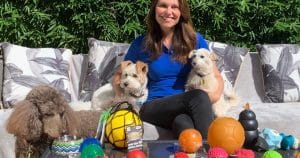
Focus training is extremely important and can be useful in many situations when you need to bring your dog’s attention back to you. This can include training your dog to “Look at Me” or “Focus”.
I find this particularly useful for reactive dogs that bark or lunge at other dogs and people, for those that like to chase moving, noisy objects, as well as for leash reactive or frustrated dogs, or those that may have a lack of impulse control.
Focus training is a useful step in the behaviour modification process when treating reactive dogs and those with fear-based aggression.
It is important to remember that most dogs that are responding negatively to certain triggers are doing so out of fear and anxiety. To understand why your dog is reacting in this way, click HERE. And to learn more about dog anxiety in general, click HERE.
When it comes to focus training, as with any training, you must always start at home under low distraction.
And, for any dog that with fear-based aggression or reactivity, we should always try to keep them at a safe distance from the trigger so they do not go over their ‘threshold’, which is the point where they start to react. This is known and their critical distance and is demonstrated in the video HERE.
Focus training can also help you to distract them when you see a trigger approaching, bring their focus back to you, so you can then quickly and positively get them out of the situation.
The easiest way to teach a “Look at Me” or “Focus” cue is to use a treat or tasty small piece of food (roast chicken is always a winner) to lure the behaviour from your dog.
1. Hold the treat/food in front of your dog’s nose.
2. Slowly bring the treat up between your eyes. Your dog should be watching the treat as it slowly moves up to your eyes.
3. As soon as you and your dog lock eyes, ‘mark’ this desired behaviour with your clicker or marker word like “yes” or “good” and then give your dog the treat. (Learn about Clicker Training and ‘Marker’ words HERE.)
4. Once your dog is reliably doing this, repeat the above steps but reward your dog with the food or treat in your other hand.
5. Repeat steps 1 to 3 with an empty hand but continue to reward your dog with the treat when they make eye contact.
6. Once they are reliably following your hand signal, start adding the verbal cue such as “Look” or “Focus” before you bring your empty hand up to your eyes.
The next step of focus training is to have the dog learn that they should focus on us and not the food.
1. Hold the treat to their nose and then move it to the side of your body. Don’t be disappointed if your dog follows the food.
2. Don’t release the treat, just be patient and wait as it won’t be long until your dog looks up at you to find out what’s going on and immediately ‘mark’ it when their eyes connect and give them the treat.
3. After doing this a few times, your dog should start to look straight up at you even when you move the food to the side.
4. Again, when they are reliably doing this, you can add the verbal cue before you hold the treat out to the side.
Keep practising this at home until it is fool-proof and then move outside to your front yard at a quiet time of the day when there may only be a few distractions to work with.
Wait until something that they might otherwise be distracted or triggered by is still at a safe distance away.
We want them to be able to hear or see that it is in the distance, but the key is to give them the verbal cue “Focus” before they turn to look at or react to it, bringing their focus back to you and then creating more distance between them and the trigger – which is ultimately what they want.
When out on your walks, try not to panic and pick them up when you see a trigger approaching, jerk on the lead or yell at them, as this increases the negative association with those triggers.
Instead use focus training to distract your dog, so you can quickly and calmly cross the road, turn a corner or even do a complete 180 turn and go back in the other direction, so they are always kept under their threshold.
The goal is stopping your dog from having continually rehearsing the unwanted behaviour – as the more they rehearse it, the more it occurs.
The earlier you get on to it, the better for both you and your dog. As I mention in many of my articles, behaviour problems don’t go away and dogs simply don’t just ‘grow out of it’, especially when it comes to anxiety.
So, if your dog is particularly reactive or anxious, please engage the services of an experienced, positive reinforcement trainer to work through a counter-conditioning and desensitisation program as soon as you can.
This includes creating a positive association with their triggers, such as that discussed in the article and video HERE, which demonstrates “Look at That”, one counter-conditioning training technique.
Or, if you missed it earlier in the article, you can check out a real life example with Tikka the Staffy and her Behaviour Adjustment Training to help address her dog to dog reactivity HERE.
If you have a puppy, book in to your local PETstock puppy school to start your positive training and socialisation as soon as you can. Some locations also offer at home mobile dog training services too.
Lara Shannon is a certified dog behaviourist and trainer, pet food nutrition specialist, Executive Producer and Host of Pooches at Play on Channel 10 and editor of Poochesatplay.com. Lara also runs her own dog training business in Melbourne’s Bayside area and is the Author of World of Dogs and Eat, Play, Love Your Dog

The benefit of interactive toys for dogs
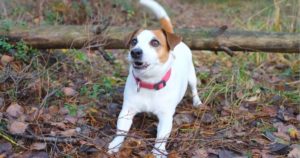
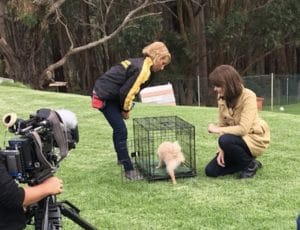
The benefits of crate training your dog
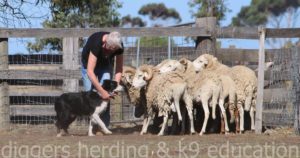
How herding training can help with dog behaviour issues
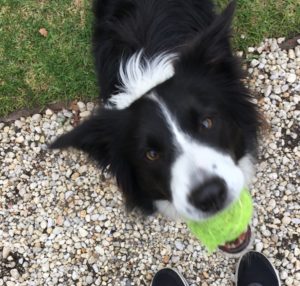
Does your dog have a ball obsession?


Get your paws on Lara Shannon’s best selling books ‘Eat, Play, Love (your dog) and World of Dogs.
Available in Australia, USA, UK and Canada.